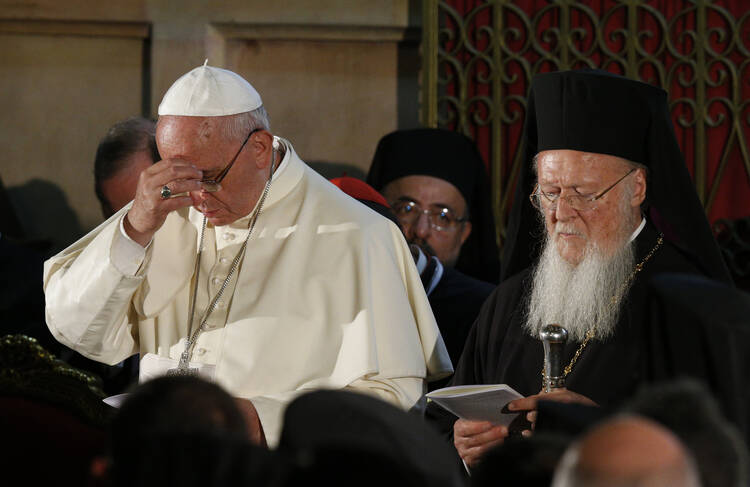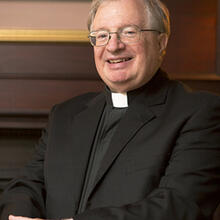Despite a packed schedule, the famously unscripted Pope Francis manages to surprise. He stops to pray at the Separation Wall surrounding Bethlehem; he pauses at a monument to Israeli victims of terror; he kisses the hands of Orthodox prelates. For me, one of the minor ecumenical miracles of his visit to the Holy Land was bringing together all the Christian churches who share the Holy Sepulchre to pray together.
For many pilgrims who visit the site of Jesus’ death, burial and resurrection, deep devotion at worshipping at the holiest shrine in Christendom mixes with dismay at the division between the churches there and the dilapidated condition of the church. So tense have relations been there, that every activity from the celebration of the Eucharist to sweeping the floor is regulated by a 19th century Ottoman law known as the Status Quo. Any change needs unanimous consent.
In the 19th century, a Syrian chapel was destroyed by fire. To this day, the Greek Orthodox have prevented its reconstruction. Nearly two decades ago in anticipation of the Great Jubilee of 2000, Israeli authorities sought to establish some emergency exits. Mr. Uri Mor, the director of the Office for Christian Community Affairs in the Ministry of Religion (later Interior), had to negotiate for several years to gain Greek assent to the project.
One notable exception was the repair of the building’s dome, which had needed repairs for many decades.(See Raymond Cohen, Saving the Holy Sepulchre: How Rival Christians Came Together to Save Their Holiest Shrine) The project was led by the Pontifical Mission for Palestine and the Catholic Near East Welfare Association. The light colors of the interior of the renovated dome brightened the dark, dusty interior. But when the question arose about repairing the body of the church, agreement could not be found. The light colors of the renovated dome, it was said, displayed “too western” an aesthetic.
So, the joining not just of Pope Francis and Ecumenical Patriarch Bartholomew in prayer, but leaders of all the churches present in the basilica , including the Syrians and Armenians, and the oft-neglected Copts and Ethiopians, as well as the local Anglican and Lutheran bishops, was a true triumph of ecumenical diplomacy. Those long familiar with the tense denominational relations in Jerusalem can barely imagine the negotiation that made it possible.
In their joint declaration, the two church leaders declared, “Our fraternal encounter today is a new and necessary step on the journey to the unity to which the only the Holy Spirit can lead us, that of communion in legitimate diversity.” In his homily, Patriarch Bartholomew underscored the point, saying, “the ultimate word in history belongs not to man, but to God . . . everything is eventually contingent upon the judgment and will of God.”
In his homily, Pope Francis, preaching at the empty tomb, appealed to the power of the resurrection to heal the divisions among Christians. “Disagreements must not frighten us and paralyze our progress. We need to believe that, just as the stone before the tomb was cast aside, so too every obstacle to our full communion will also be removed. This will be a grace of resurrection, of which we can have a foretaste even today.” In the service observers could experience just a hint of that foretaste.
Drew Christiansen, S. J., the former editor of America, is a canon of the Holy Sepulchre of Jerusalem and Distinguished Professor of Ethics and Global Human Development at Georgetown University.








